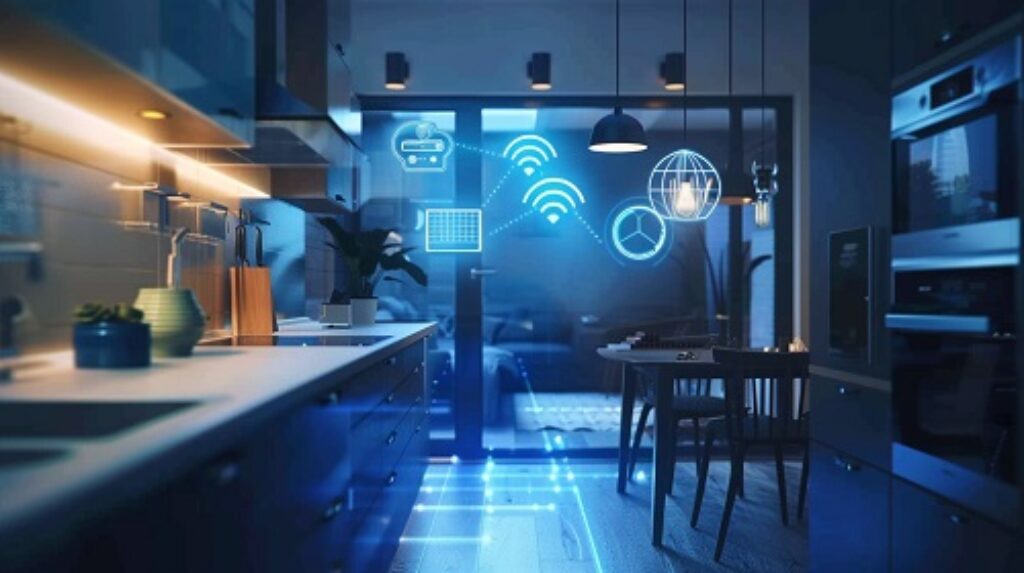Introduction:
Smart home devices have revolutionized our lives, offering convenience, comfort, and unparalleled control over our homes.
These devices, from thermostats to security cameras, enhance our lives in countless ways. However, with the rise of interconnected devices, concerns about smart home device security have also increased.
Are our smart homes vulnerable to hackers? Is our personal information at risk? In this article, we will explore the potential risks and provide valuable safety tips to protect your smart home devices.
Key Takeaways:
- Smart home devices can be vulnerable to hacking, posing risks to your privacy and personal information.
- Assess the risks associated with each smart home device before making a purchase.
- Secure your home network with a strong password and the highest security protocol available.
- Regularly update the firmware of your router and connected devices.
- Use unique passwords for each device and enable multi-factor authentication whenever possible.

Assessing the Risks of Smart Home Devices
Before investing in smart home devices, it is crucial to assess the potential vulnerabilities and privacy concerns associated with them.
Understanding these risks will help you make informed decisions about which devices to include in your smart home ecosystem.
Common Vulnerabilities
- Security Cameras: Security cameras may capture and upload footage to the internet, which raises privacy concerns. Hackers could potentially gain unauthorized access to your camera feed.
- Voice Assistants: Voice assistants like Amazon Alexa are always listening, which raises questions about data collection and privacy. It is important to consider the level of control you have over the data shared with these devices.
Privacy Concerns
- Data Collection: Smart home devices often collect and store personal data, such as your daily routines, preferences, and even sensitive information. It is essential to understand how this data is being used and protected.
- Third-Party Access: Some smart home devices may share data with third-party apps or services. It is important to review the privacy policies and permissions granted to ensure that your data is not being shared with unauthorized entities.
To illustrate the risks and vulnerabilities associated with smart home devices, consider the following table:
| Device | Vulnerabilities | Privacy Concerns |
|---|---|---|
| Security Cameras | Weak passwords, outdated firmware | Data exposure, unauthorized access |
| Voice Assistants | Always listening, potential voice spoofing | Data collection, third-party access |
| Smart Door Locks | Weak encryption, firmware vulnerabilities | Unauthorized access, hacking |
Note: The vulnerabilities and privacy concerns mentioned above are not exhaustive and may vary depending on the device and brand. It is important to research and review the specifications and security measures of specific devices before making a purchase.
By considering the potential vulnerabilities and privacy concerns associated with smart home devices, you can make informed choices to protect your data and maintain the security of your smart home ecosystem.
Securing Your Smart Home Network
One of the most critical steps in securing smart home devices is taking measures to protect your home network.
By implementing strong security practices, you can significantly reduce the risk of smart home device hacks. Here are some smart home security best practices to consider:
1. Secure your Wi-Fi network
To start, make sure your Wi-Fi network is properly secured. Set a strong password that combines uppercase and lowercase letters, numbers, and special characters.
Avoid using easily guessable passwords, such as common words or personal information. Additionally, ensure that you are using the highest security protocol available for your router, such as WPA2 or WPA3.
2. Regularly update firmware
Keeping your router and connected devices up to date is crucial for maintaining their security. Manufacturers often release firmware updates that include important security patches and enhancements.
Check for updates regularly and install them as soon as they become available to stay protected.
3. Consider upgrading your router
If you have an outdated router, it may lack modern security features. Consider upgrading to a newer model that offers improved security measures.
Many newer routers come with built-in security functionalities, such as firewalls and intrusion detection systems, which can help safeguard your smart home network.
4. Use unique passwords for each device
Using the same password for multiple devices can be a major security risk. If a hacker gains access to one device, they could potentially compromise your entire network.
Set unique, strong passwords for each smart device in your home to prevent unauthorized access.
5. Enable multi-factor authentication
Multi-factor authentication adds an extra layer of security to your smart home devices.
By requiring a second form of verification, such as a fingerprint scan or a unique code sent to your smartphone, even if an attacker obtains your password, they would still need additional authentication to access your devices.

Securing your smart home network is crucial for protecting your connected home from potential hacks.
By implementing these best practices, you can significantly reduce the risk and enjoy the convenience of a smart home system with peace of mind.
Best Practices for Smart Home Device Security
Securing your smart home devices is crucial to ensure the safety and privacy of your connected home.
In addition to securing your network, there are several best practices you should follow to enhance the security of your smart home systems.
Purchase Devices from Reputable Brands
When investing in smart home devices, only purchase from reputable brands that prioritize security and offer regular software updates.
Trusted brands have strict security measures in place, reducing the risk of vulnerabilities and hacks.
Create Strong and Unique Passwords
Avoid using default passwords and usernames for your smart devices. Instead, create strong and unique passwords for each device.
A strong password should consist of a combination of letters, numbers, and special characters to make it difficult to guess.
Using different passwords for each device enhances security.
Disable Unnecessary Remote Access
Some smart home devices offer remote access capabilities, allowing you to control them when you’re away from home.
However, if a device doesn’t require remote access, it’s best to disable this feature. Disabling remote access limits potential entry points for hackers.
Regularly Check Privacy Settings
Be diligent about regularly checking the privacy settings on your smart home devices. Ensure that you have enabled the highest level of privacy and data protection.
Review any data collection or sharing settings and adjust them according to your preferences.
Create a Separate Network for Smart Home Devices
Consider setting up a separate network specifically for your smart home devices. This isolation can prevent hackers from gaining access to your main network and other devices connected to it.
Monitor Your Network Activity
Regularly monitor your network for any unusual activity or suspicious behavior. Pay attention to any unexpected device connections or data transfers.
If you notice any signs of a potential breach, take immediate action to investigate and resolve the issue.
Invest in Security Software
Enhance the security of your smart home devices by investing in reputable security software. This software provides an additional layer of protection against potential hacks and intrusions, safeguarding your connected home.
By following these best practices, you can significantly reduce the risk of hacks and breaches on your smart home systems.
Protecting your connected home is essential for maintaining privacy and ensuring the safety and security of your personal information.

Conclusion
Securing your smart home ecosystem is crucial to protect yourself from potential hackers and safeguard your privacy.
By following these safety tips and best practices, you can minimize the risks and enjoy the convenience of a smart home without compromising your security.
Firstly, make sure to regularly update your smart home devices. Manufacturers often release firmware updates that address security vulnerabilities and improve device performance.
Keeping your devices up-to-date ensures that you have the latest security patches installed.
In addition, take steps to secure your home network. Use a strong password for your Wi-Fi network and enable the highest security protocol available. Regularly update your router’s firmware to address any security issues.
Creating a separate network for your smart home devices can also isolate them from your main network, providing an extra layer of protection.
Lastly, choose reputable brands that prioritize security when purchasing smart home devices. Look for companies that regularly release software updates and have a history of taking security seriously.
Be cautious about using default passwords and instead create strong and unique passwords for each device.
Regularly review and update privacy settings to ensure the highest level of security and monitor your network for any signs of unusual activity.
FAQ
Can smart home devices be hacked?
Yes, smart home devices can be hacked if proper security measures are not taken. Hackers can exploit vulnerabilities in these devices and gain unauthorized access to personal information or control over the devices.
How can I assess the risks of smart home devices?
Before investing in smart home devices, it is important to consider the potential vulnerabilities of each device and the level of privacy it offers. This will help you make informed decisions about which devices to include in your smart home ecosystem.
What steps should I take to secure my smart home network?
To secure your smart home network, start by securing your Wi-Fi network with a strong password and using the highest security protocol available, such as WPA2 or WPA3. Regularly update the firmware of your router and connected devices, use unique passwords for each device, and enable multi-factor authentication whenever possible.
What are the best practices for smart home device security?
Some best practices for smart home device security include purchasing devices from reputable brands that prioritize security, creating strong and unique passwords for each device, disabling remote access on devices that don’t require it, regularly checking privacy settings, and setting up a separate network for your smart home devices.
How can I secure my smart home ecosystem?
By following safety tips and best practices, such as regularly updating your devices, securing your network, using strong and unique passwords, and being cautious about the devices and brands you choose, you can create a secure and connected home environment.
Read more about The Most Amazing Smart Home Devices


